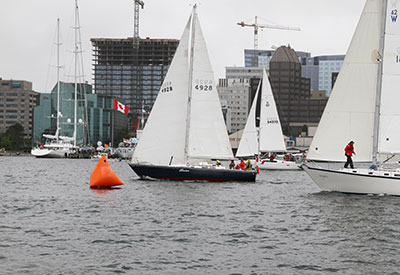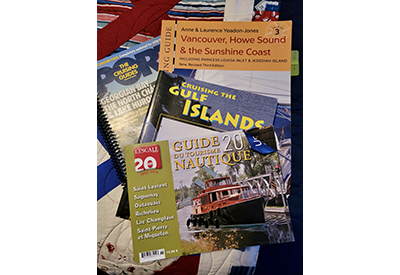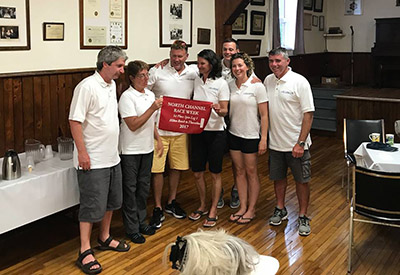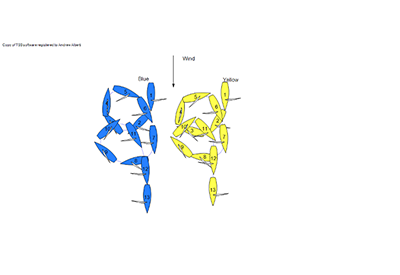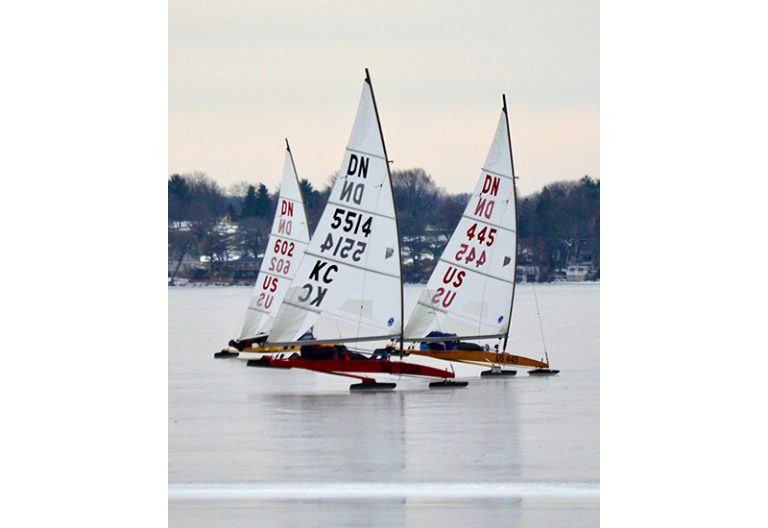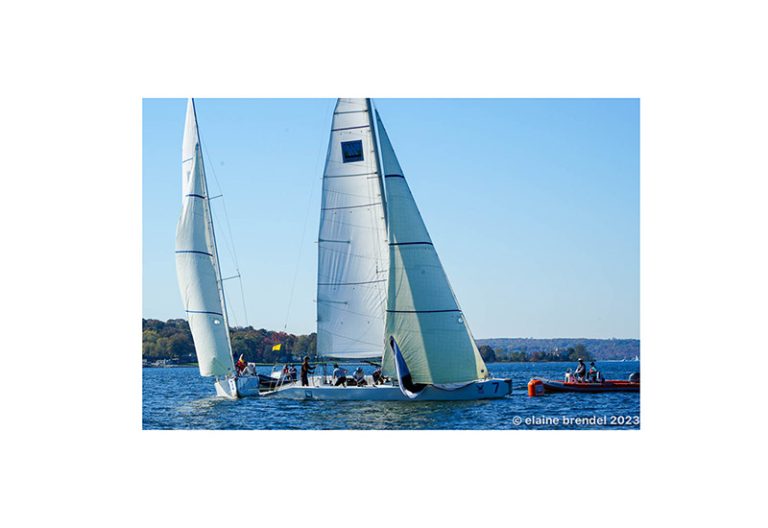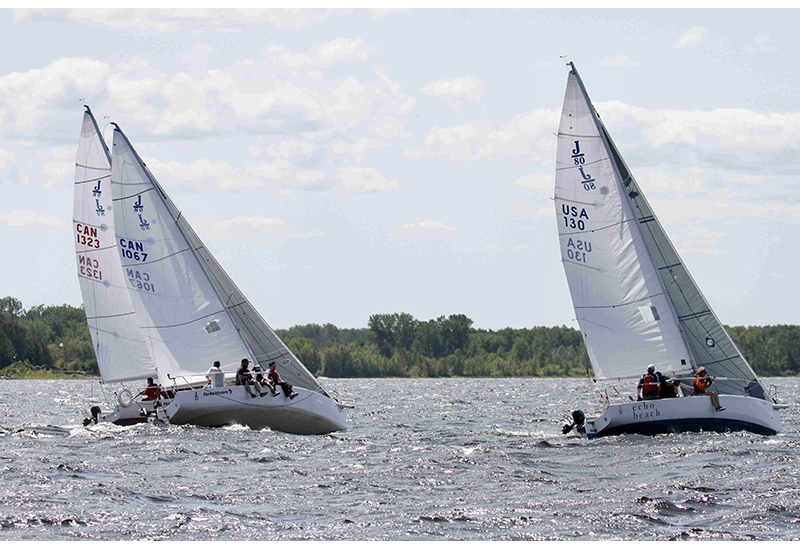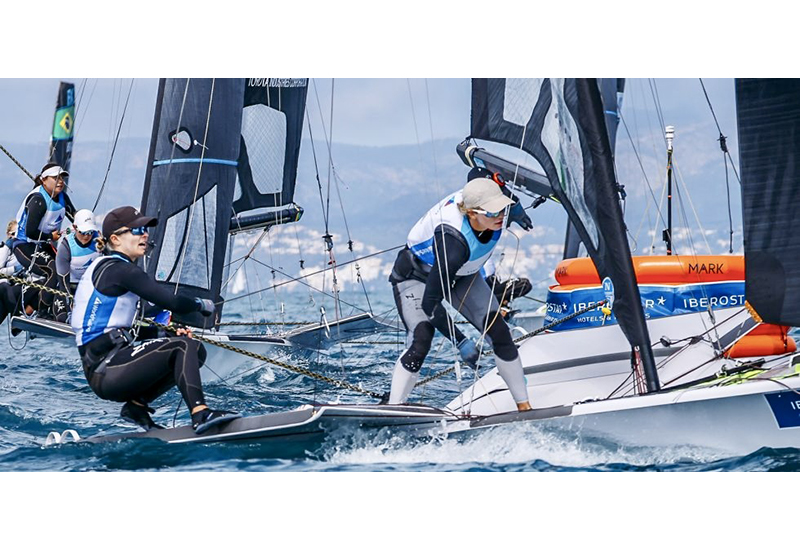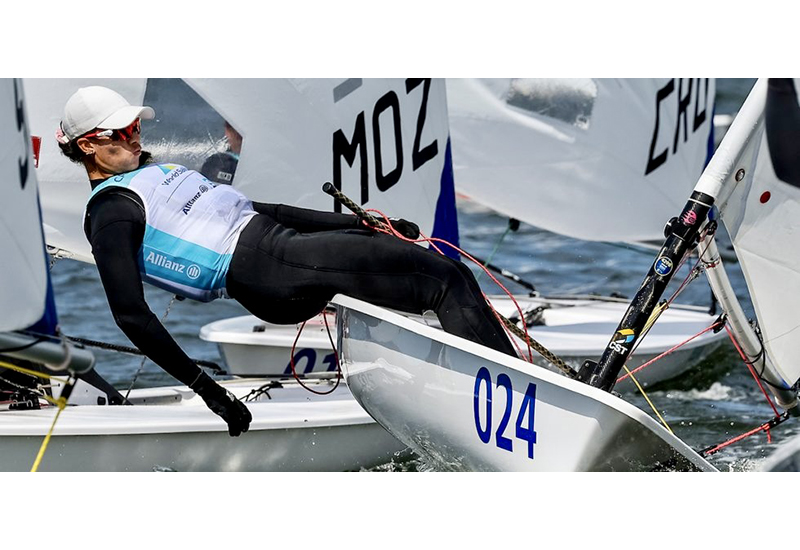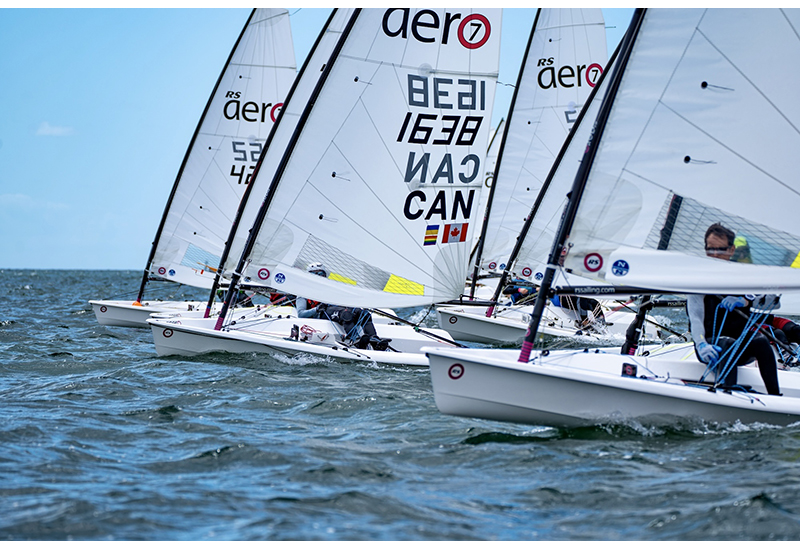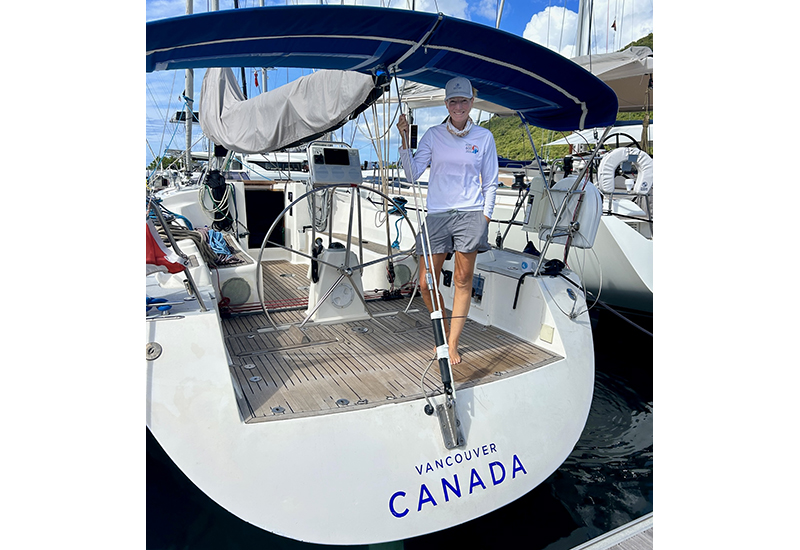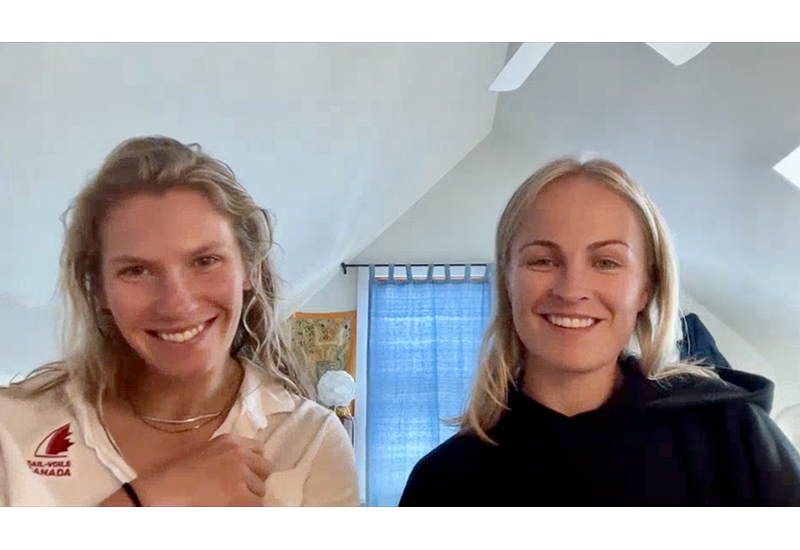Does Club Racing Have a Future? (Part B)
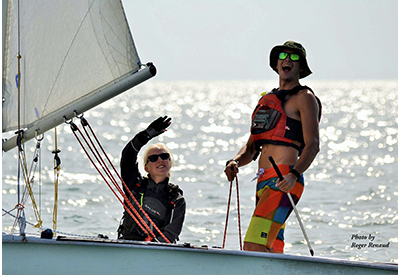
February 1, 2023
By Roger Renaud
Part A of this article summarized the many hundred replies to the survey on the topic of whether Club Racing will survive. It addressed the importance of an active club culture, and a governance model that supports the club’s primary mission. Education and training, on a variety of topics, are seen as critical success factors.
Other than a culture and a will for success, at a club that wants to sustain an active weekday club racing, is finding people to crew has the most challenges. Over 50% of the comments received focused on “getting crew”, and the various innovative ways clubs around the Great Lakes have addressed this common issue.
Recruiting
The primary ingredient at a club that wants to sustain an active weekday club racing, is people to help you race your boat. Unless you are providing a single or double handed weekday club racing program, the average boat required 3 – 4 sailors if in a white sail (JAM) division, or 5 – 7 people for a boat in the spinnaker division. Over 50% of the comments received focused on “getting crew”, and the various innovative various ways clubs have found to promote “crewing”. There needs to be an active recruiting program to attract and maintain a crew bank.
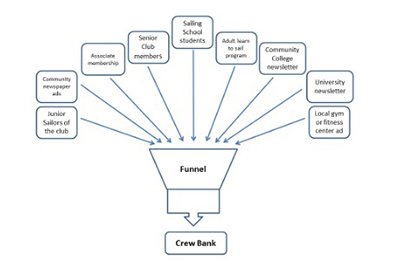 Learn to Sail Program for both juniors and adults
Learn to Sail Program for both juniors and adults
A junior sailing program is paramount for a club to survive in the longer term. A past-commodore from the GTA offered this advice:
– “Learn to Sail (Junior Club) and then engaging them to continue with keelboat. Also, diversity is key. We need more and more women sailing! Finally, although a challenge, keep costs down so younger generations can afford.”
Never will I forget the feeling I had the first time I walked into a sailing club, and saw clothes, and gear, and books, and pens/pencils, sock and stuff, everywhere inside the main floor of the building. I smiled and said to myself “this is great”. Never would you usually see the junior sailing chaos in any of the ‘great halls’ of a club. There is always a junior sailing building somewhere to house the mess. This club had a sailing school as well. The junior sailors were also welcomed in the main clubhouse. They were made to feel welcome. This spoke to the club culture I saw.
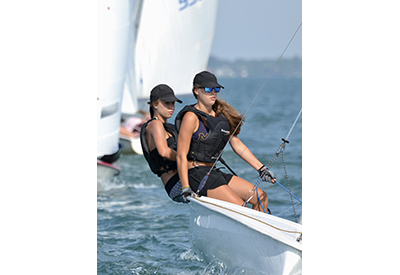 Adult Sailing Programs
Adult Sailing Programs
Many clubs are offering an adult keel boat program maintain a small fleet of one-design boats. Sharks, J24’s, and C&C25’s seem to be the boat of choice. This demonstrates the support from the membership, and the appreciation of the benefits of these recruitment programs.
Through these programs, quality new members have joined the host clubs. Many become available crew as well. This Lake Ontario sailor is talking about the program successes at his club:
– “There’s also a club-run adult learn-to-sail program not affiliated with any recognized authority that brings a few new members each year, a few eventually convert to racing. The key ingredients are reflected in our NFS fleet, all of whom enjoy a weeknight on the water (and socials at the bar and BBQ afterwards).”
Offer an inexpensive Associate Membership:
A common alternative to senior membership is the ‘associate member’ category. For a few hundred dollars, a non-boat owner can join the Club, use the facilities, but not have any vote or say in the operation of the club. Typically, associate members are those who come down, and hop on a boat as crew for weekday racing. Boat owners are asked to support this initiative. It gives these new recruits a sense of belonging. It’s a win-win situation.
Here is a supportive comment: – “Most of the people who race sailboats are not owners or club members; that’s something to reflect on. We won’t grow the sport by accommodating only the owners and club members.”
Advertise at the local Fitness Centers, the Community College, and University, Set-up a Crew Bank…
My club back in the GTA was extremely successful with focused advertising. On a “Crew – Information Night” each spring, on average, 100 – 150 students would show up to learn about getting involved in this free program. They were told the gear they needed, the basics about crewinng, and about the commitment that would be expected by the boat owner. A ‘Crew Bank’ desk was always set up in the Sailor’s Lounge, where skippers would register before a race as needing crew, and where crew signed in stating their availability. The Crew Bank Coordinator directed the crew to dock to find their assigned boat. There were roughly 250 senior members, and 275 associate members, and this holds true today. This club races twice a week and sees 35 – 50 boats out racing each night. This effort proved very successful.
A good majority of the respondents clearly said: – “Recruitment must be inclusive – novice to expert, men, women”, and “that our sport needed to be attractive to the younger crowd”. “Somehow we must make sailing affordable for the young”.
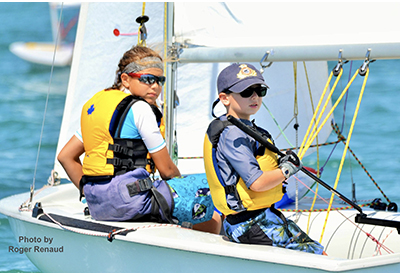 Don’t teach new recruits how to sail, teach them how to crew!
Don’t teach new recruits how to sail, teach them how to crew!
“Learn to Crew” is more important – it’s easier to teach – and has more immediate impact on a boat’s performance than a “Learn to Sail” course.
A trainer responded and offered this outline: – “We ran a ‘4 evenings in April’ program at the clubhouse for ~ 5 years. We encouraged both dinghy sailors (i.e. junior club graduates) and non-sailors to take up keel boat racing as ‘trained crew’. We taught knots, crewing etiquette, clothing, vocabulary, sailing theory, practical skills like how to wrap a winch, and use a cleat, used videos, and then tested the students – graduated about 80 people. Probably 20 or so of those were spouses or children of people who already owned boats, but most of the other 60 found a skipper and began mid-week racing.” For example a newbiedoes not initially need to know how an airfoil works, but they must learn their role and the steps involved with in hoisting and dousing sails.
One sailor offered this great suggestion: – “Minimize the politics and/or egos, and when a good team can help a new or not so good team, swap some crew around for a night or two, take two people from the good team with two from the new team and help them get up to speed. It’s a real simple formula. Keep it fun!”
Give the Gift of Sailing…
One club reported: – “We are introducing a brand new ‘Inclusive Opportunity Fund’, which provides financial assistance to underprivileged junior sailing candidates”. Another great idea!
Importance of active one-design fleets and of hosting regattas/sailing events
In one-design racing, it does not matter at all about the type of boats that are racing. They could all be ‘bathtubs’ for that matter. The important thing is that they are all equal, according to the class rules and specifications. The theory being, properly prepared and sailed, their boat speed should be identical. Racing tactics and boat handling become the key to winning races. For these reasons, racing in a one-design fleet makes you a better racing sailor.
In support of their one-design fleet(s), the club should regularly be hosting one design racing events. This brings activity to the club, where the membership at large can join in the festivities, and where the club members can ‘root’ for their home teams.
Race Management
To keep club members interested in weekday racing, and to have additional members eager to participate, the Club must provide appropriate race management practices.
“We want our members to learn about racing a sailboat, and therefore, a part of their education and training, is to provide good race management”.
Sailing Clubs can make better use of technology to support weekday racing, when it comes registration, race results, and race management. The software exists to notify, for example, the sailors and their crew (the paying customer), that a weeknight race might be delayed or cancelled.
One sailor said: – “I’d like to know that if I spend an hour through rush-hour driving to the boat, there’ll be a race, not a cancelation. I’d like to know that the club has a plan to shorten the course when the wind dies, especially when there are a dozen things at home competing for my time, and when I need that race to be a counter to qualify for a season award”.
Provincial Support
Education and Training can be provided by the various provincial authorities. In my case, Ontario Sailing, offers the full range of courses and programs, and for all levels.
Ontario Sailing also supports Learn to Sail Programs, for both junior and adult.
Cost of not doing something
Do you think club racing will survive at your club based on the critical success factors outlined in this article?
It’s now budget time. It’s the time when Clubs are making plans for the upcoming year…and beyond. Perhaps it’s time to do a review of your sailing programs and how they align with your mission. Gather some statistic from the past few years and see if there are any trends developing or not. Are there any improvements that can be made?
As with any proposal, “The future of racing depends on us, all of us.”
 Born in Windsor, Ontario, Roger moved to Toronto for work in the early 70’s where he sailed a Hobie off Cherry Beach. Eventually joining ABYC, he has owned three different Thunderbirds over the years. The Thunderbird, 8-meter, E-22, Laser 28, CC27, CC34, CC99, and the Beneteau First 36.7’s, were the other one-design fleets he raced in, each for a few years dedicated to a program. He was also involved in a significant three-year program on the NM 36, Maggie Kelly.
Born in Windsor, Ontario, Roger moved to Toronto for work in the early 70’s where he sailed a Hobie off Cherry Beach. Eventually joining ABYC, he has owned three different Thunderbirds over the years. The Thunderbird, 8-meter, E-22, Laser 28, CC27, CC34, CC99, and the Beneteau First 36.7’s, were the other one-design fleets he raced in, each for a few years dedicated to a program. He was also involved in a significant three-year program on the NM 36, Maggie Kelly.
Since returning to Essex County, he has been racing locally and in the Detroit (DYRA) PHRF divisions on his restored Pearson Flyer.

